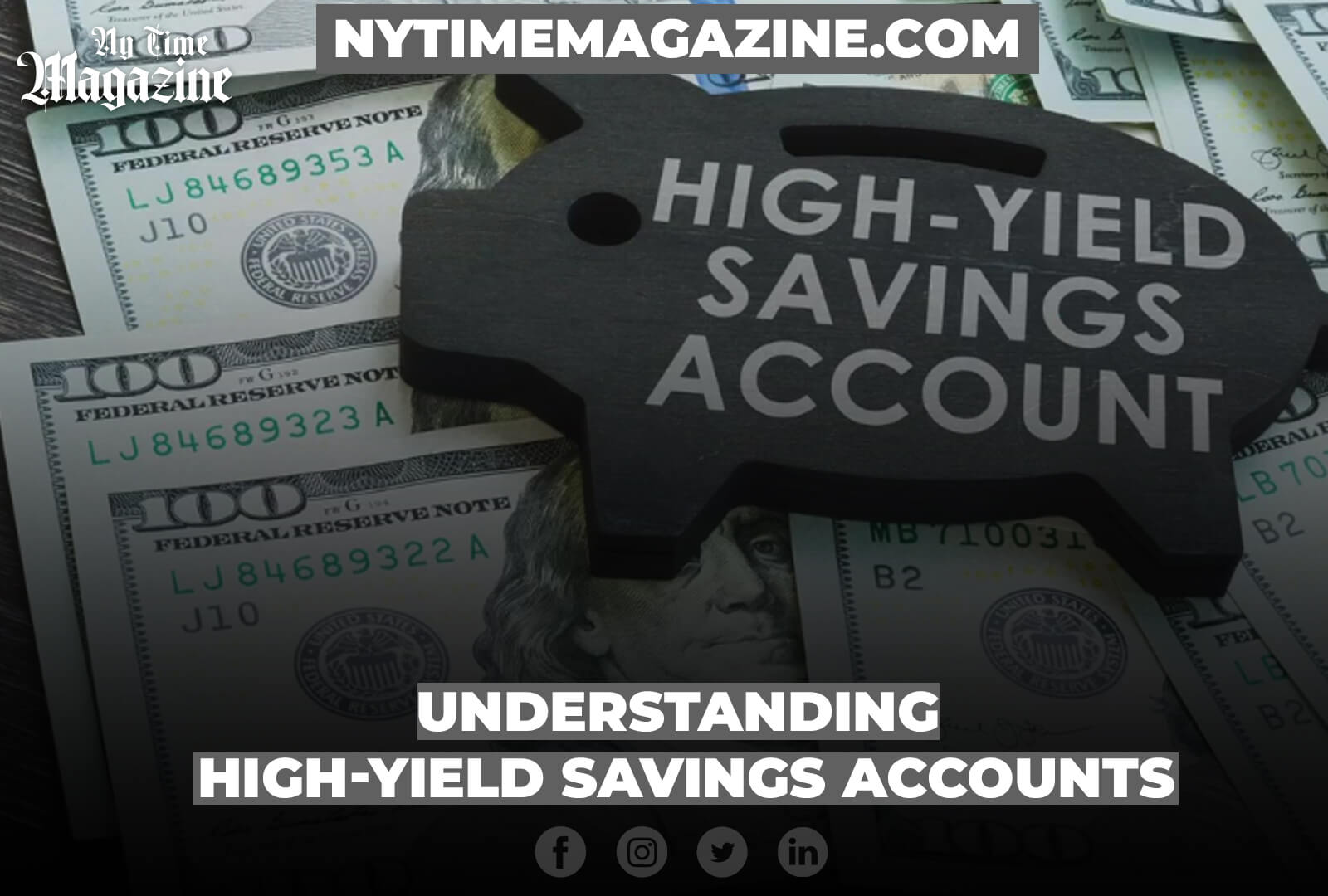A high-yield savings account, often referred to as an HYSA, is a financial product that offers significantly higher interest rates compared to traditional savings accounts. The allure of a high-yield savings account lies in its ability to earn up to 10 to 12 times more interest than the national average of a standard savings account.
Contents
- 1 How Does a High-Yield Savings Account Work?
- 2 Key Points to Remember
- 3 How Do High Yield Savings Accounts Work?
- 4 Utilizing Your High-Yield Savings Account
- 5 Choosing the Right High-Yield Savings Account
- 6 Opening a High-Yield Savings Account
- 7 Where to Find High-Yield Savings Accounts
- 8 Key Considerations for High-Yield Accounts
How Does a High-Yield Savings Account Work?
Traditionally, individuals held their savings accounts at the same bank where they maintained their checking accounts for the sake of convenience in transferring funds. However, the financial landscape has evolved with the emergence of online banks and the digitization of traditional banking institutions. This transformation has given rise to intense competition among banks to attract savers by offering higher interest rates, leading to the creation of a new category of financial products known as “high-yield savings accounts.”
Key Points to Remember
Here are some essential takeaways to keep in mind when considering high-yield savings accounts:
- Higher Interest Rates: High-yield savings accounts typically offer interest rates that are 10 to 12 times higher than those of regular savings accounts.
- Online Dominance: The highest interest rates are often available from online banks, making them a popular choice among savers.
- Ease of Transfers: Electronic transfers between a high-yield savings account and a checking account, even if they are held at different banks, have become straightforward and quick.
- Comparing Options: When searching for a high-yield savings account, compare factors such as initial deposit requirements, interest rates, minimum balance requirements, and any associated fees.
The difference in interest between high-yield savings account rates and the national average is substantial. For instance, if you have $5,000 in a conventional savings account with a national average rate of 0.39% annual percentage yield (APY), you would earn a mere $19.50 over a year. However, by depositing the same $5,000 in an account earning 4.5% APY, you could earn $225 in interest.
How Do High Yield Savings Accounts Work?
To maximize your savings, you might need to separate your savings account from your checking account. Thanks to the ease of electronic transfers between institutions, moving money between a checking and a high-yield savings account, even if they are held at different banks, is now a simple process.
Unlike traditional brick-and-mortar banks that offer a full suite of banking services, banks offering high-yield savings accounts typically focus solely on savings products. Many do not provide checking accounts, and few offer ATM cards. Transactions, both deposits and withdrawals, are typically conducted through electronic bank transfers or mobile check deposits.
One important feature is the same between traditional savings accounts and their high-yield counterparts: the federal insurance you’re provided against bank failures from the Federal Deposit Insurance Corp. (FDIC) and credit union failures from the National Credit Union Association (NCUA). Your deposits are protected for up to $250,000 per account.
Utilizing Your High-Yield Savings Account
A high-yield savings account should be viewed as a part of your overall financial portfolio. Its role may vary depending on your financial goals and circumstances:
- Emergency Fund: If your savings account serves as an emergency fund, consider maintaining at least three to six months’ worth of living expenses in it.
- Goal-Oriented Savings: For larger purchases like a house, car, or vacation, a high-yield account can help safeguard your principal while allowing interest earnings to contribute to your savings goal.
- Cash Management: Opening a high-yield savings account can be an effective way to earn interest on cash that would otherwise sit idle in a checking account.
Many banks permit the opening of multiple savings accounts, each with personalized nicknames (e.g., “Car Fund” or “Hawaii Vacation”). Alternatively, you can open high-yield savings accounts at multiple top-paying institutions to keep your funds organized for specific goals.
Choosing the Right High-Yield Savings Account
When selecting a high-yield savings account, it’s essential to compare options across the market to make an informed choice. Consider the following factors:
- Interest Rate: Determine the current interest rate and whether it’s a standard rate or an introductory promotional rate. Be aware of any minimum or maximum balance thresholds for earning the promoted rate.
- Required Initial Deposit: Find out the minimum money required to open the account and ensure it aligns with your financial situation.
- Minimum Balance Required: Be aware of any minimum balance requirements, as falling below them could result in fees that offset the interest rate earnings.
- Fees: Understand any fees associated with the account and explore ways to avoid them, such as maintaining a minimum balance.
- Links to Other Banks and/or Brokerage Accounts: Check whether you can link your high-yield savings account to deposit accounts at other banks or brokerage firms. Be aware of any restrictions or waiting periods for new accounts.
- Accessing Your Money: Explore the options available for withdrawing funds, including ATM access if needed.
- Deposit Options: If you plan to deposit checks, inquire if the bank offers a smartphone app for mobile check deposit. Alternatively, check if you can deposit checks by mail or at an ATM.
- Compounding Method: Be aware of how frequently the bank compounds interest (daily, monthly, quarterly, semiannually, or annually), as this can affect your overall yield.
Opening a High-Yield Savings Account
Opening a high-yield savings account is a straightforward process, whether you choose a new bank or your current institution:
- Existing Bank: If your current bank offers a competitive high-yield savings account, opening one should be a relatively simple process, as your information is likely already verified.
- New Institution: If you opt for a new institution, most high-yield savings accounts can be opened online. You’ll need to complete an electronic application with your personal information, so ensure you have your driver’s license, Social Security number, and primary bank account details readily available.
Where to Find High-Yield Savings Accounts
Online banks typically offer the highest interest rates on high-yield savings accounts. However, it’s worth comparing rates and terms among several accounts to ensure you make the best choice for your financial goals.
Key Considerations for High-Yield Accounts
In summary, when evaluating high-yield savings accounts, research and compare various factors, including initial deposit requirements, interest rates, minimum balance requirements, fees, account linking options, access to funds, deposit
Frequently Asked Questions
- What is a High-Yield Savings Account?
- A high-yield savings account is a type of savings account that offers significantly higher interest rates compared to traditional savings accounts. These accounts are designed to help your savings grow faster.
- How Does a High-Yield Savings Account Work?
- High-yield savings accounts work similarly to regular savings accounts, but they offer much higher interest rates. You deposit money into the account, and the bank pays you interest on your balance. This interest is usually compounded daily or monthly.
- Are High-Yield Savings Accounts Safe?
- Yes, high-yield savings accounts are generally safe. They are typically offered by reputable banks that are FDIC-insured, which means your deposits are protected up to $250,000 per account in case of a bank failure.
- What Are the Benefits of a High-Yield Savings Account?
- The main benefits of a high-yield savings account include earning higher interest, easy access to your funds, and the safety of FDIC insurance. These accounts are ideal for building an emergency fund or saving for short-term goals.
- Is There a Minimum Balance Requirement for High-Yield Savings Accounts?
- Minimum balance requirements vary from one bank to another. Some high-yield savings accounts may have minimum deposit requirements to open the account, while others require you to maintain a certain balance to earn the highest interest rate.
- Can I Access My Money Anytime with a High-Yield Savings Account?
- Yes, most high-yield savings accounts offer easy access to your money. You can usually withdraw funds online, through mobile apps, or at ATMs. However, there might be withdrawal limits, so it’s essential to check with your bank.
- Do High-Yield Savings Accounts Have Monthly Fees?
- Many high-yield savings accounts do not have monthly maintenance fees. However, it’s crucial to review the terms and conditions of the specific account you’re interested in, as some may charge fees if certain conditions aren’t met.
- Are High-Yield Savings Account Interest Rates Fixed or Variable?
- Interest rates on high-yield savings accounts can be either fixed or variable, depending on the bank. Fixed rates remain constant over time, while variable rates can change with market conditions.
- Can I Have Multiple High-Yield Savings Accounts?
- Yes, you can open multiple high-yield savings accounts at different banks if you wish to diversify your savings or take advantage of different interest rates and features. This can be useful for specific savings goals.
- Are High-Yield Savings Accounts a Good Place for My Emergency Fund?
- Yes, high-yield savings accounts are an excellent choice for an emergency fund. They offer safety, liquidity, and the opportunity to earn more interest than traditional savings accounts, ensuring your money is readily available when you need it most.



